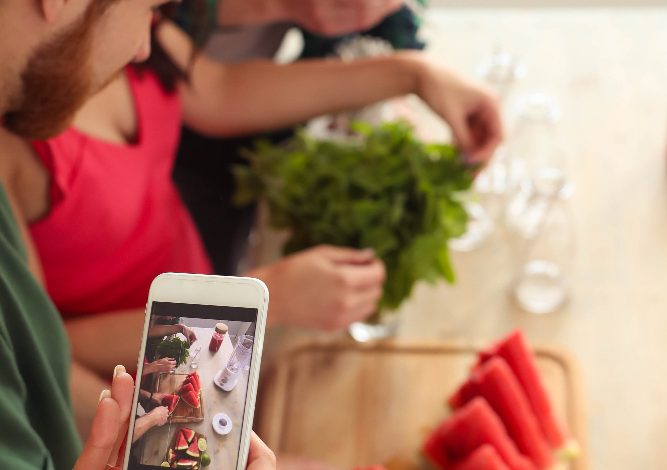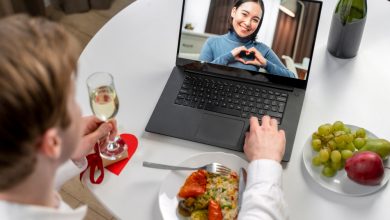Starting a Home-Based Food Tour Business: Virtual Experiences

With the rise of remote work and virtual experiences, food tourism has adapted to the digital space, allowing food lovers around the world to explore cuisines and cultural food practices from the comfort of their homes. Starting a home-based virtual food tour business offers an exciting opportunity to share culinary knowledge, connect with audiences, and bring global food cultures to life online. If you’re passionate about food and have an entrepreneurial spirit, here’s a step-by-step guide to launching a successful virtual food tour business.
1. Define Your Niche and Target Audience
Choosing a specific niche and target audience is crucial to standing out in the growing world of virtual experiences. Think about the types of food experiences you’re most passionate about and who would be interested in joining.
Ideas for Food Tour Niches:
- Regional Cuisine Exploration: Focus on a specific city, country, or region, offering virtual tours that dive into the local dishes, ingredients, and culinary customs.
- Street Food Tours: Introduce participants to popular street foods from around the world, sharing the history and stories behind each dish.
- Cooking Classes and Food Tastings: Offer interactive classes where participants can cook along with you or try foods while learning about their origins.
- Cultural and Historical Food Tours: Explore the history and cultural significance of foods, such as traditional holiday dishes or foods linked to specific events or rituals.
- Niche Dietary Tours: Cater to specific diets, like vegan, gluten-free, or plant-based, while introducing participants to unique global flavors within those parameters.
Defining your niche will help you attract a specific audience and build a brand identity, making it easier to market your virtual food tours effectively.
2. Plan Engaging and Interactive Tour Experiences
A successful virtual food tour is more than just a presentation; it’s an interactive experience that engages participants and brings them into the world of food exploration. Carefully plan each tour to ensure it’s structured, engaging, and offers value to attendees.
Elements of a Great Virtual Food Tour:
- Storytelling: Use storytelling to convey the history and cultural significance of each dish, ingredient, or tradition. Make it personal by sharing your own experiences or connections to the food.
- Visuals and Props: Use photos, videos, and props to make your tour visually appealing. Display traditional kitchen tools, spices, or ingredients to enhance the experience.
- Interactive Q&A: Encourage participants to ask questions throughout the tour, making the experience feel like a conversation rather than a lecture.
- Food Pairing Suggestions: If possible, provide participants with a list of foods or beverages to enjoy alongside the tour, like wine pairings or suggested snacks.
- Cooking Demonstrations: Add value by including a live cooking demo, showing participants how to make a simple dish that reflects the theme of the tour.
Designing interactive and visually engaging experiences will help participants feel more connected to the food culture you’re showcasing, making them more likely to enjoy and recommend your tours.
3. Set Up Your Virtual Workspace and Equipment
Delivering a high-quality virtual experience requires a professional setup, even if you’re working from home. Make sure your workspace is clean, organized, and well-lit for a clear and visually appealing presentation.
Tools and Equipment for Virtual Tours:
- High-Quality Camera: A good camera, such as a DSLR or a high-quality webcam, will ensure that your video is clear and professional. Ensure the camera is stable and well-positioned.
- Microphone: A high-quality microphone is essential for clear audio. Background noise and echo can be distracting, so invest in a lapel or condenser microphone.
- Lighting: Good lighting is crucial. Use natural light or a ring light to brighten your workspace, making it easier for participants to see details.
- Backdrop and Props: A clean, uncluttered background works best. Consider decorating your workspace with props like food ingredients, cookbooks, or traditional kitchen tools.
- Internet Connection: A stable internet connection is essential for live streaming. Use a wired connection or ensure strong Wi-Fi to avoid interruptions.
A professional setup will improve the quality of your virtual tour, enhancing the participant experience and your reputation as a host.
4. Create a Website and Social Media Presence
To attract participants, build a website and social media presence that showcases your tours, highlights your expertise, and provides easy booking options.
Building Your Online Presence:
- Create a Website: Your website should include information about your tours, an “About” section, a blog for food-related content, and a booking page. Platforms like WordPress or Wix make it easy to build a professional-looking site.
- Use Social Media: Share photos, videos, and behind-the-scenes content on Instagram, Facebook, and Pinterest. Social media allows you to reach a wider audience and engage with potential customers.
- Start a YouTube Channel: Consider starting a YouTube channel where you share snippets of your virtual tours, cooking tips, or culinary stories. This can attract an audience that may be interested in booking a tour.
- Build an Email List: Collect email addresses from your website visitors to keep them informed about new tours, discounts, and food-related content.
A strong online presence builds trust, establishes your brand, and makes it easier for people to find and book your virtual tours.
5. Market Your Virtual Food Tours
Marketing is essential to attract participants and grow your business. Use a combination of digital marketing strategies to reach your target audience and build a loyal following.
Marketing Strategies for Virtual Food Tours:
- Collaborate with Influencers: Partner with food bloggers, influencers, or chefs who can help promote your tours to their audience.
- Leverage SEO and Blogging: Write blog posts on food and culture topics related to your tours. This can improve your website’s SEO, attracting organic traffic from people searching for virtual food experiences.
- Offer Introductory Discounts: Provide discounts for first-time participants or bundle offers for multiple tours to encourage bookings.
- Encourage Reviews and Testimonials: After each tour, encourage participants to leave a review or testimonial. Positive reviews help build credibility and attract new customers.
- Partner with Local Businesses: Collaborate with local restaurants, wineries, or food markets that can offer discounts or exclusive deals for your participants.
Effective marketing spreads the word about your virtual food tours, helping you attract participants from around the world and grow your brand.
6. Collect Feedback and Continuously Improve
Gathering feedback is essential to improving your virtual tours and delivering a high-quality experience. After each session, ask participants for their thoughts and suggestions.
Using Feedback to Improve Your Tours:
- Post-Tour Surveys: Send a quick survey to participants after each tour. Ask about their favorite parts and any areas for improvement.
- Monitor Social Media Comments: Pay attention to comments and reviews on social media to see what people enjoyed and what could be improved.
- Update Content Based on Feedback: Use feedback to improve your storytelling, visual aids, or pacing. Small adjustments can significantly enhance the participant experience.
Listening to participant feedback helps you refine your virtual food tours, ensuring each experience is enjoyable, educational, and memorable.
7. Monetize Your Virtual Food Tour Business
Once your tours are up and running, consider different ways to monetize your business and generate additional income.
Monetization Options for Virtual Food Tours:
- Charge for Live Tours: Set a fee for each virtual tour, offering different price points based on the length and content of the experience.
- Offer Recorded Tours: Sell access to recorded tours that participants can watch on-demand. This provides a passive income stream and caters to participants in different time zones.
- Create Subscription Packages: Offer monthly or yearly subscriptions where participants can access multiple tours at a discounted rate.
- Sell Merchandise: Create branded merchandise, such as aprons, cookbooks, or food-related products, to sell alongside your tours.
- Affiliate Marketing: Partner with food brands and share affiliate links to ingredients, kitchen tools, or other products that participants can purchase.
Exploring different monetization options can boost your income and make your virtual food tour business more sustainable.
Conclusion
Starting a home-based virtual food tour business is an exciting way to share your love of food and culture with a global audience. By defining a niche, planning engaging tours, setting up a professional workspace, building an online presence, and continuously improving based on feedback, you can create a successful and enjoyable virtual food experience for participants. With the right approach and dedication, your virtual food tour business can bring the world’s flavors to life from the comfort of your home. Embrace the journey, and enjoy the rewarding experience of connecting people with the richness of global food cultures!





